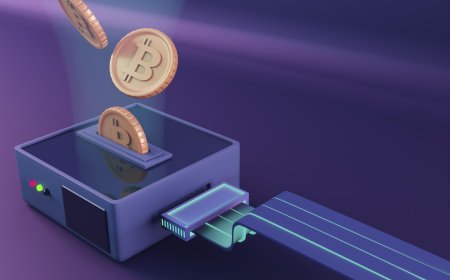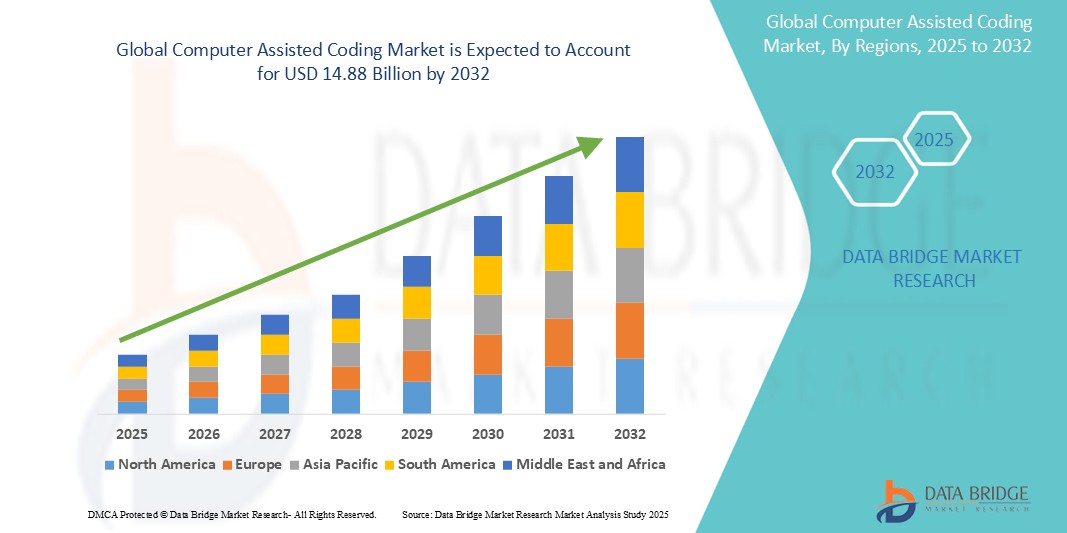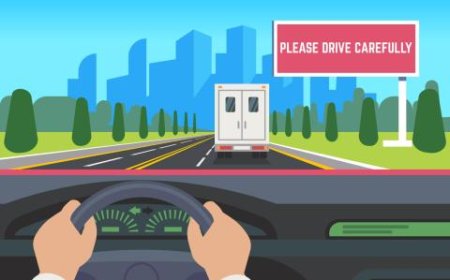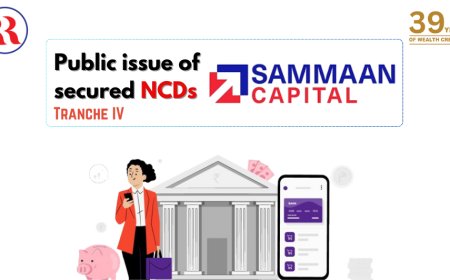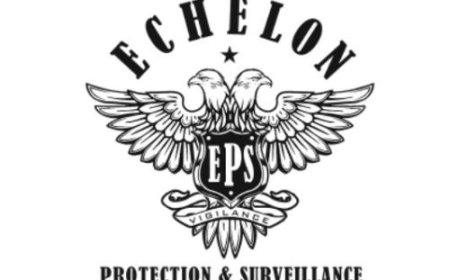How Lidar Annotation Services Are Revolutionizing ADAS Technology
This comprehensive guide explores how Lidar Annotation Services are revolutionizing ADAS development, examining their core components, technical challenges, and future applications in creating safer autonomous driving systems.

Advanced Driver Assistance Systems (ADAS) are transforming automotive technology by making vehicles safer and more efficient. These systems help drivers navigate complex environments, avoid accidents, and enhance overall driving experiences. However, ADAS effectiveness depends entirely on one critical factor: the system's ability to accurately perceive and interpret its surroundings.
This capability relies heavily on Lidar Annotation Services, which provide the essential tools and methodologies needed for precise data labeling. Through sophisticated 3D point cloud annotation techniques, these services enable ADAS systems to develop comprehensive environmental awareness that goes far beyond traditional 2D image processing.
This comprehensive guide explores how Lidar Annotation Services are revolutionizing ADAS development, examining their core components, technical challenges, and future applications in creating safer autonomous driving systems.
What Are Lidar Annotation Services?
Lidar Annotation Services represent specialized data processing solutions that transform raw LiDAR sensor data into meaningful, actionable information for ADAS systems. These services utilize advanced machine learning algorithms to identify, classify, and label objects within three-dimensional point clouds generated by LiDAR sensors.
Unlike traditional image annotation methods that work with flat, two-dimensional representations, Lidar Annotation Services process millions of data points that capture precise spatial relationships between objects. Each point contains detailed information about distance, angle, and reflectivity, creating a rich dataset that enables ADAS systems to understand their environment with remarkable accuracy.
The annotation process involves human experts and automated systems working together to label various elements within the point cloud data. These elements include vehicles, pedestrians, road signs, lane markings, barriers, and environmental features. The labeled data then trains machine learning models that power ADAS functionalities like collision avoidance, adaptive cruise control, and automated parking.
3D Point Cloud Annotation: The Foundation of Modern ADAS
3D Point Cloud Annotation Services provide the backbone for advanced ADAS capabilities. Traditional 2D image annotation creates flat representations that lack crucial depth information. This limitation becomes problematic when ADAS systems need to make split-second decisions about object distances, speeds, and trajectories.
3D point cloud annotation solves this problem by preserving spatial relationships and depth information. When a LiDAR sensor captures data, it generates millions of points that represent surfaces in three-dimensional space. Annotation services process these points to create detailed object boundaries, classification labels, and semantic information that ADAS systems can interpret.
The annotation process requires sophisticated algorithms that can handle the complexity and volume of LiDAR data. These algorithms must accurately identify object boundaries, distinguish between different object types, and maintain consistency across varying environmental conditions. The resulting annotations provide ADAS systems with the detailed environmental understanding necessary for safe autonomous operation.
Key Features and Benefits of Lidar Annotation Services
Depth Perception Capabilities
One of the most significant advantages of 3D Point Cloud Annotation lies in its superior depth perception capabilities. Traditional 2D image annotation struggles to provide accurate distance measurements, which can lead to dangerous miscalculations in ADAS systems. LiDAR sensors capture precise distance information for every point in their field of view, creating accurate three-dimensional representations of the environment.
This depth perception enables ADAS systems to make informed decisions about object proximity, collision risks, and navigation paths. For example, when approaching a stopped vehicle, the system can accurately determine the exact distance and closing speed, allowing for precise braking calculations. Similarly, when changing lanes, the system can assess the three-dimensional positions of nearby vehicles to ensure safe maneuvering.
The depth information also helps ADAS systems distinguish between objects that might appear similar in 2D images. A cardboard box and a concrete barrier might look identical in a photograph, but their LiDAR signatures reveal completely different structural properties that affect collision response strategies.
Machine Learning Algorithm Integration
Modern Lidar Annotation Services leverage sophisticated machine learning algorithms to achieve precise object identification and classification. These algorithms can process vast amounts of point cloud data in real-time, identifying patterns and features that would be impossible for human annotators to detect consistently.
The machine learning approach offers several advantages over manual annotation methods. First, it provides consistency across different environmental conditions, lighting situations, and weather patterns. Second, it can process data much faster than human annotators, enabling real-time ADAS applications. Third, it continuously improves through exposure to new data, adapting to emerging scenarios and edge cases.
Deep learning algorithms, particularly convolutional neural networks adapted for 3D data, have shown remarkable success in point cloud processing. These algorithms can learn complex spatial relationships and object characteristics directly from the data, reducing the need for hand-crafted feature engineering. The result is more accurate object detection and classification that improves ADAS system reliability.
High-Quality Annotation Standards
The effectiveness of ADAS systems depends heavily on annotation quality. High-quality annotations provide detailed, accurate representations of real-world environments that enable ADAS systems to make reliable decisions. These annotations must be precise enough to distinguish between different object types, consistent across various scenarios, and comprehensive enough to cover edge cases.
Quality control measures in professional annotation services include multi-level review processes, automated consistency checks, and continuous validation against real-world performance data. Human experts review automated annotations to ensure accuracy, while automated systems check for consistency and completeness across large datasets.
The annotation quality directly impacts ADAS system performance. Poor annotations can lead to misidentification of objects, incorrect distance calculations, and potentially dangerous system failures. High-quality annotations, conversely, enable ADAS systems to operate safely and effectively across diverse driving conditions.
Technical Challenges in 3D Point Cloud Annotation
Computational Complexity
Processing 3D point cloud data requires significant computational resources. LiDAR sensors generate millions of data points per second, creating massive datasets that challenge traditional processing approaches. The three-dimensional nature of the data adds complexity compared to 2D image processing, requiring specialized algorithms and hardware architectures.
Memory requirements for point cloud processing often exceed those of traditional image processing by orders of magnitude. Storing and manipulating millions of 3D coordinates, along with associated metadata, requires efficient data structures and memory management techniques. Real-time processing demands add another layer of complexity, as systems must process incoming data streams while maintaining low latency.
GPU acceleration has become essential for practical point cloud processing. Modern graphics processing units excel at parallel computations required for point cloud analysis, enabling real-time processing of LiDAR data. However, optimizing algorithms for GPU architectures requires specialized expertise and careful consideration of memory access patterns.
Precision and Accuracy Requirements
ADAS applications demand extremely high precision in object detection and classification. A misidentified object or incorrectly measured distance can lead to system failures with serious safety implications. This precision requirement drives the need for sophisticated annotation techniques and quality control measures.
Annotation precision depends on several factors, including sensor calibration, environmental conditions, and algorithm performance. LiDAR sensors must be precisely calibrated to provide accurate distance measurements. Environmental factors like rain, fog, or dust can affect sensor performance and annotation accuracy. Algorithm performance must be validated across diverse scenarios to ensure consistent precision.
The precision requirements also extend to temporal consistency. ADAS systems must track objects across multiple sensor readings, requiring annotations that maintain object identity and properties over time. This temporal consistency adds complexity to the annotation process and requires specialized tracking algorithms.
Scalability Challenges
Training effective ADAS systems requires enormous amounts of annotated data. Collecting and annotating sufficient data to cover all possible driving scenarios presents significant scalability challenges. The annotation process must be efficient enough to handle large datasets while maintaining quality standards.
Automated annotation techniques help address scalability challenges by reducing the need for manual annotation. However, these techniques require initial training data and ongoing validation to ensure accuracy. The balance between automation and human oversight becomes crucial for maintaining quality while achieving scale.
Data diversity also presents scalability challenges. ADAS systems must work across different geographic regions, weather conditions, and traffic patterns. Collecting and annotating representative data for all these scenarios requires careful planning and resource allocation.
Future Trends in Lidar Annotation Services
Deep Learning Integration
The integration of deep learning algorithms represents a major trend in Lidar Annotation Services. These algorithms can learn complex patterns directly from point cloud data, reducing the need for manual feature engineering and improving annotation accuracy. Recent advances in 3D deep learning have enabled more sophisticated object detection and classification capabilities.
Transformer architectures, originally developed for natural language processing, are being adapted for point cloud processing. These architectures can capture long-range dependencies in spatial data, improving object recognition and scene understanding. The attention mechanisms in transformers also provide interpretability benefits, helping developers understand how systems make decisions.
Self-supervised learning techniques are reducing the need for manually annotated training data. These approaches can learn useful representations from unlabeled point cloud data, potentially reducing annotation costs while improving system performance. The combination of self-supervised learning with traditional supervised techniques promises to accelerate ADAS development.
High-Performance Computing Applications
The computational demands of point cloud processing are driving adoption of high-performance computing (HPC) resources. Cloud-based HPC platforms enable annotation services to scale processing capabilities dynamically, handling peak workloads efficiently. These platforms also provide access to specialized hardware like GPU clusters optimized for parallel processing.
Edge computing applications are bringing HPC capabilities closer to vehicles. Specialized automotive computing platforms can perform real-time point cloud processing onboard vehicles, reducing latency and improving system responsiveness. These edge computing solutions must balance processing power with energy efficiency and cost constraints.
Quantum computing represents a potential long-term trend for point cloud processing. While current quantum computers are not suitable for practical applications, future quantum systems might offer advantages for certain types of optimization problems common in point cloud processing.
Real-Time Processing Advancements
The move toward fully autonomous vehicles is driving demand for real-time point cloud processing capabilities. Future annotation services must support real-time analysis of LiDAR data streams, enabling immediate responses to changing environmental conditions. This requirement is pushing the development of more efficient algorithms and hardware architectures.
Streaming processing frameworks are being adapted for point cloud data, enabling continuous analysis of LiDAR streams. These frameworks must handle variable data rates, sensor failures, and processing latencies while maintaining system reliability. The integration of streaming processing with existing ADAS architectures requires careful consideration of system design and performance requirements.
Low-latency processing is becoming crucial for safety-critical applications. Future systems must respond to detected obstacles within milliseconds, requiring highly optimized processing pipelines. The development of specialized hardware and algorithms for low-latency processing represents an active area of research and development.
Transforming Automotive Safety Through Advanced Annotation
Lidar Annotation Services are fundamentally transforming automotive safety by providing ADAS systems with unprecedented environmental awareness. The transition from traditional 2D image processing to sophisticated 3D point cloud annotation represents a quantum leap in system capabilities. This advancement enables vehicles to understand their surroundings with human-like depth perception while maintaining the consistency and reliability that only automated systems can provide.
The impact extends beyond individual vehicle safety to encompass entire transportation ecosystems. As more vehicles incorporate advanced ADAS capabilities powered by high-quality Lidar annotation, traffic flow improves, accidents decrease, and overall transportation efficiency increases. The network effects of widespread ADAS adoption promise to revolutionize how we think about transportation safety and efficiency.
The ongoing development of Lidar Annotation Services, combined with advances in machine learning and high-performance computing, positions the automotive industry for continued innovation. The challenges of computational complexity, precision requirements, and scalability are being addressed through technological advances and innovative approaches. As these solutions mature, they will enable even more sophisticated ADAS capabilities and move the industry closer to fully autonomous driving.
The future of automotive technology depends on the continued evolution of Lidar Annotation Services. Organizations that invest in these capabilities now will be better positioned to develop the next generation of safe, efficient, and intelligent vehicles. The intersection of advanced sensor technology, sophisticated annotation techniques, and powerful computing platforms is creating unprecedented opportunities for automotive innovation.





